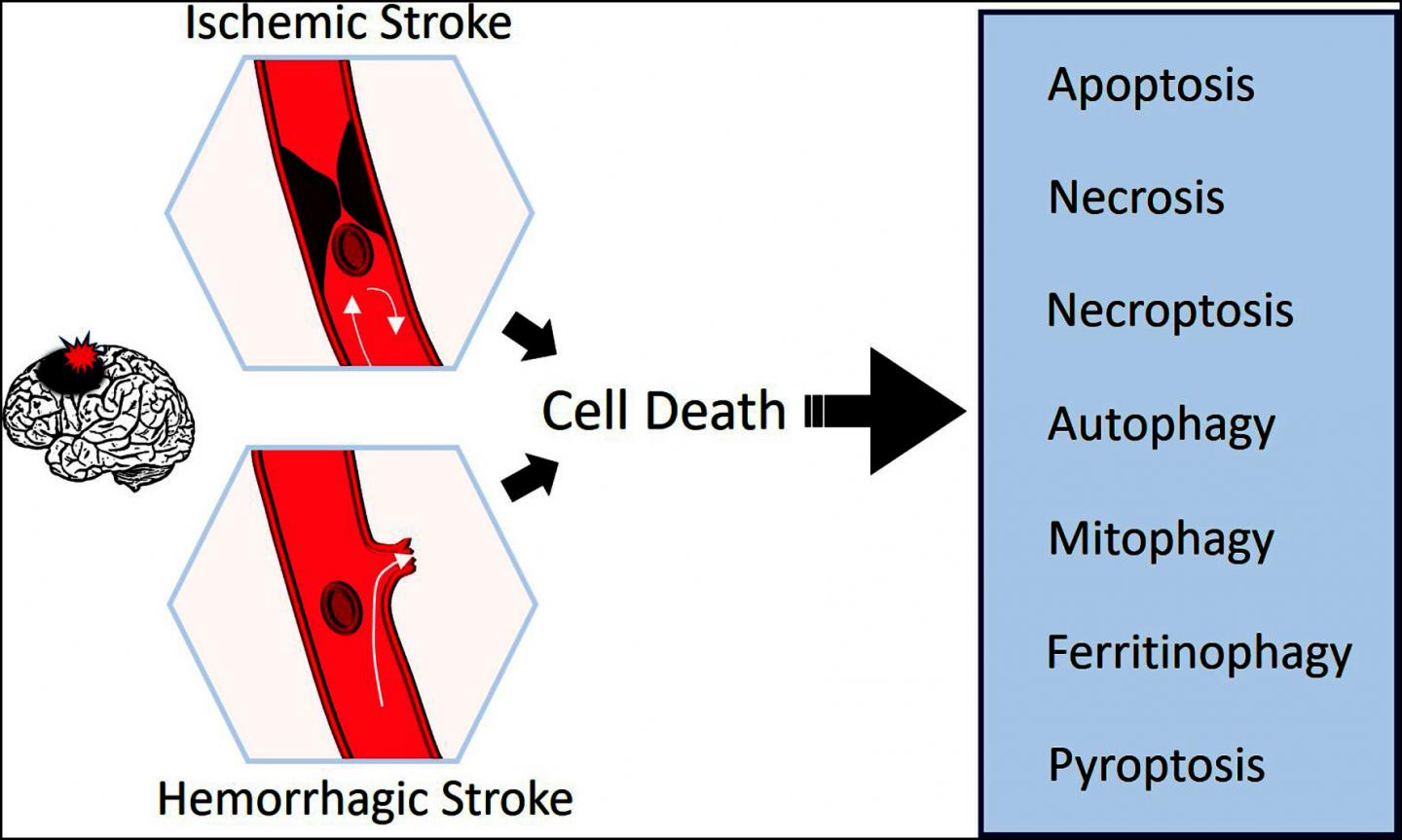
IMAGE: As a result of ischemia or hemorrhage, blood supply to neurons is disrupted which subsequently promotes a cascade of pathophysiological responses resulting in cell loss.
Credit: Bentham Science Publishers, Dr. Emine Sekerdag et al.
The blood circulation to neurons is affected due to Ischemic, hemorrhagic stroke and subarachnoid hemorrhage stimulation the activation of pathophysiological responses i.e. mitochondrial death pathways, protein misfolding, apoptosis, pyroptosis, necrosis, autophagy, mitophagy, ferritinophagy, excitotoxicity, free radicals release, and inflammation. The review focuses on the recent updates in our knowledge about cellular death mechanisms caused by the loss of neuronal cells and astrocytes, damage to white matter.
Novel treatment preferences in stroke involves restoration of blood flow control and the applicability of treatments is restricted due to a limited bioactive time window of thrombolytic agents. Ischemic, hemorrhagic stroke and subarachnoid hemorrhage are discussed in this review in relation to novel molecular, cellular treatment alternatives and cellular death mechanisms.

